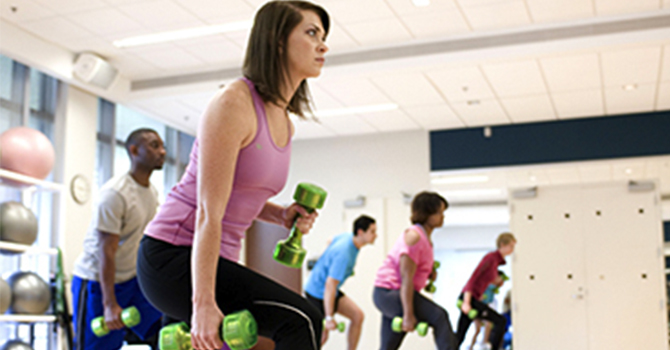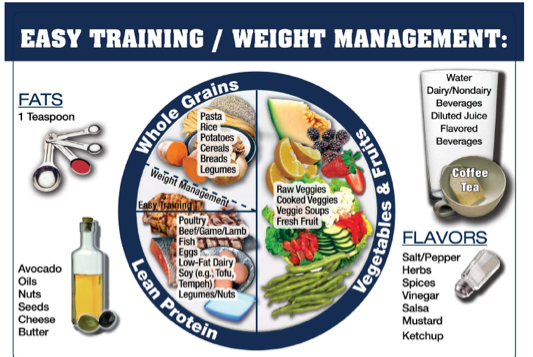3 Tips to Eat Your Way to a Better Workout

Alexandra Babcock
MPH Candidate, Nutritional Sciences
With the holiday season fast approaching and the new year just around the corner, many people are looking forward to a fresh start, and New Year's resolutions, especially ones focusing on health and physical fitness, are likely to pop up. If you're planning to hit the gym in 2018, follow these three nutrition tips to fuel your exercise routine and transform your fitness goals to lasting habits.
1. Fuel your workouts with real food. There is plenty of online debate about the best time to eat and the types of foods and supplements to consume to increase your athletic performance. However, eating whole foods rich in fiber, protein, and anti-inflammatory phytochemicals—such as whole grains, fruits, and vegetables—is the simplest approach for long-term performance gains1.
2. Eat to train; don't train to eat. Increasing your exercise routine means that your muscles are burning more glucose—their primary fuel source—to keep you moving. As you increase the intensity and time spent exercising, your body will begin breaking down its glucose stores, also known as glycogen, to fuel the activity. To make sure your body always has the energy it needs to perform, you should replace the glucose your muscles use to move2. The United States Olympic Committee's training meal provides a great visual example of a typical meal you can use to replenish your glycogen stores. Complex carbohydrate sources, such as whole grains and starchy vegetables like squash, should always be part of your training meals, even in small amounts for individuals managing their weight.

Olympic Diet
3. Practice the three Rs:
- Refuel: Provide your body with a source of protein within 20 minutes of the last physical effort of your workout. This helps stop the catabolic, or break-down, state and change it to an anabolic, or building, state of growth and muscle recovery. My go-to recovery snack is a small handful of pistachios and a medium banana.
- Rehydrate: Replenish the body water you lost in sweat. Approximately one liter of water is needed to replace one kilogram or 2.2 pounds of weight lost after a workout. Instead of opting for high-sugar electrolyte replacements, choose foods high in potassium, such as tomatoes or avocados, to replenish electrolytes.
- Rest: Get a good night's sleep after a workout. Sleep deprivation can lead to decreases in cognition, memory, immunity, and metabolic function, such as glucose and glycogen regulation3, all of which negatively impact your recovery and ability to continue meeting your training goals.
Whatever your fitness pursuit may be, there is no time like the present to start. Hopefully, with these tips, you will feel energized and motivated to stick with your New Year's resolution and accomplish your exercise goals.
- Learn more about Nutritional Sciences at Michigan Public Health.
- Interested in public health? Learn more here.
Sources
- Close, G. L., Hamilton, D. L., Philp, A., Burke, L. M., & Morton, J. P. (2016). New strategies in sport nutrition to increase exercise performance. Free Radical Biology and Medicine, 98, 144-158.
- Coyle, E. F., & Coggan, A. R. (1984). Effectiveness of carbohydrate feeding in delaying fatigue during prolonged exercise. Sports Med, 1(6), 446-458.
- Halson, S. L. (2014). Sleep in elite athletes and nutritional interventions to enhance sleep. Sports Medicine, 44(1), 13-23.
About the Author
 Alexandra Babcock is pursuing a Master of Public Health in Nutritional Sceinces from
the University of Michigan School of Public HEalth. Training to become a Registered
Dietitian, Babcock has a passion for combining the physiology and science behind food
to help tackle chronic disease, increase sport performance, and reach optimum health
and personal wellness. Babcock's diverse interests in nutrition span across multidisciplinary
experiences in sustainable food systems, youth sport programming, workplace wellness,
and the psychology of motivation and behavior change.
Alexandra Babcock is pursuing a Master of Public Health in Nutritional Sceinces from
the University of Michigan School of Public HEalth. Training to become a Registered
Dietitian, Babcock has a passion for combining the physiology and science behind food
to help tackle chronic disease, increase sport performance, and reach optimum health
and personal wellness. Babcock's diverse interests in nutrition span across multidisciplinary
experiences in sustainable food systems, youth sport programming, workplace wellness,
and the psychology of motivation and behavior change.
